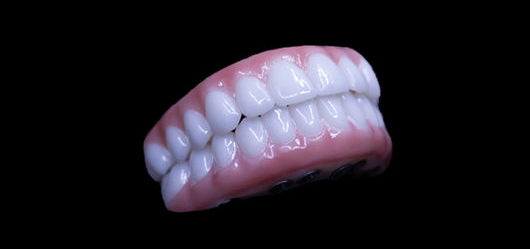Some Ideas on Dental Sense You Need To Know
Some Ideas on Dental Sense You Need To Know
Blog Article
All About Dental Sense
Table of ContentsGet This Report on Dental SenseDental Sense Can Be Fun For EveryoneAn Unbiased View of Dental Sense6 Easy Facts About Dental Sense Described
are medical gadgets surgically implanted right into the jaw to recover an individual's capacity to chew or their appearance. They give support for man-made (fake) teeth, such as crowns, bridges, or dentures. When a tooth is lost due to injury or disease, an individual can experience difficulties such as quick bone loss, malfunctioning speech, or modifications to chewing patterns that result in pain.Dental implant systems are composed of an oral implant body and dental implant abutment and might likewise consist of a joint addiction screw. Dental implant vs bridge. The oral implant body is surgically inserted in the jawbone in place of the tooth's root. The oral implant abutment is typically affixed to the dental implant body by the abutment addiction screw and prolongs through gum tissues into the mouth to sustain the connected synthetic teeth
(https://www.find-us-here.com/businesses/Dental-Sense-Miami-Florida-USA/34200016/)Structure of The Dental Implant System choosing dental implants, talk to your dental company regarding the possible advantages and dangers, and whether you are a prospect for the procedure. Things to consider: Your general health and wellness is a crucial consider identifying whether you are a good candidate for dental implants, for how long it will certainly require to recover, and just how long the implant may remain in location.
Smoking may influence the healing process and decrease the long-term success of the dental implant. The healing process for the dental implant body may take a number of months or longer, during which time you usually have a temporary joint instead of the tooth. the oral implant procedure: Carefully adhere to the dental hygiene guidelines offered to you by your dental provider.
5 Easy Facts About Dental Sense Described
Implant failure can lead to the need for an additional operation to deal with or replace the dental implant system. Recovers the capability to eat Recovers aesthetic appearance Aids keep the jawbone from diminishing because of bone loss Protects the health and wellness of the surrounding bone and gums Assists keep adjacent (close-by) teeth stable Enhances high quality of life Damage to surrounding all-natural teeth during implant placement Injury to the surrounding cells throughout surgical treatment, such as sinus opening Injury throughout surgical treatment (for instance, crack of surrounding jawbone) Insufficient function, such as seeming like the teeth do not bite together usually A sensation that the tooth is loosened or turning in location arising from an abutment screw loosening Implant body failure (looseness of the implant body) as a result of systemic infection, which may be most likely in patients with uncontrolled diabetics issues due to regional infection in bone and gums supporting the implant body as a result of delayed recovery, which may be more probable in clients that smoke Problem cleaning up the periodontals around the implant, resulting in bad dental hygiene Untreated gum disease Post-surgical feeling numb due to nerve impingement or damages Constantly alert wellness treatment suppliers and imaging technicians that you have dental implants prior to any magnetic vibration imaging (MRI) or x-ray treatments.
FDA is not familiar with any type of damaging events reported for MRI or x-ray procedures with oral implants. Oral implants systems are normally constructed from products that follow global consensus criteria of the International Company for Standardization (ISO) or ASTM International. These requirements have details of what makes a risk-free material.

An oral implant is a structure that replaces a missing out on tooth. With screw-like devices, the doctor inserts a dental implant into the jawbone, and it acts as a support for a fabricated tooth, called a crown.
The 4-Minute Rule for Dental Sense
Some people are not qualified for oral implant surgery. It is for oral specialists to operate people with: intense illnessuncontrollable metabolic diseasebone or soft cells disease or infectionIf these issues are solved, a person can have the surgical procedure. In, oral specialists avoid operating on people with: If people with any one Home Page of the above undertake dental implant surgery, there is a higher risk of the implant falling short.

Oral dental implant surgical procedure is a customized procedure. It's not the same for every person. The following provides a basic summary of what you can expect your dental expert, dental doctor, periodontist or prosthodontist to do: Position the dental implant operatively. Provide you time to heal. Connect the blog post and last crown, bridge or denture.
Next off, your cosmetic surgeon will thoroughly position the oral implant right into your jaw. If your implant is near the front of your mouth, your dental professional will certainly make a temporary tooth for you to put on till you recover.
The 20-Second Trick For Dental Sense
Your service provider can inform you what to expect in your situation. Throughout the recovery phase, your jawbone ought to fuse to the dental implant. This procedure, called osseointegration, is essential for security and long-lasting success. This procedure can take anywhere from 3 to 9 months. In many cases, it might take longer.
Once your implant heals, your dentist can connect the abutment (little port post) and your final remediation (crown, bridge or denture). This typically takes regarding one hour to complete and may call for a second minor surgery. You shouldn't really feel any kind of pain throughout your oral implant treatment since your supplier will certainly use drug to numb your gum tissues.
Report this page